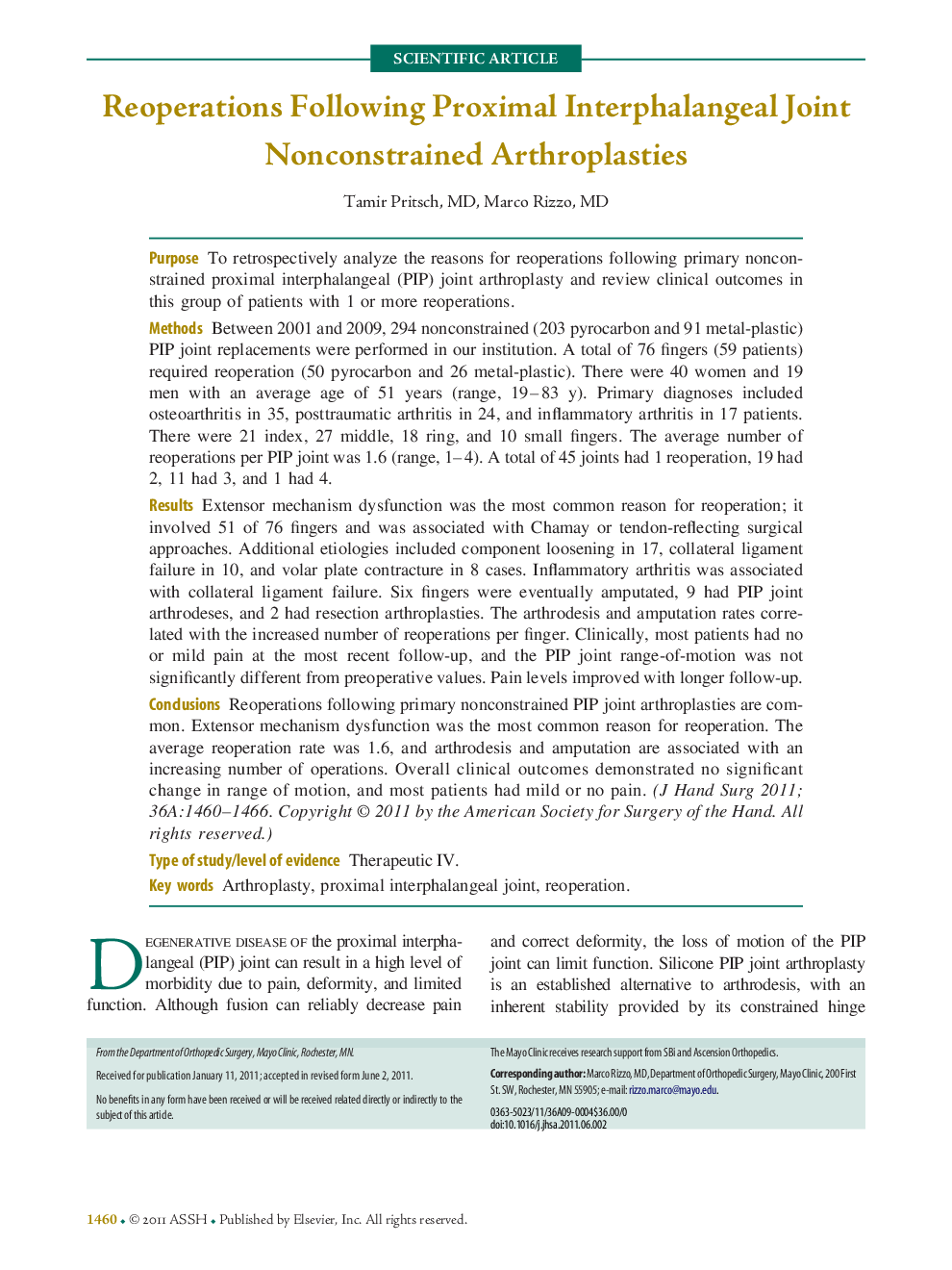| کد مقاله | کد نشریه | سال انتشار | مقاله انگلیسی | نسخه تمام متن |
|---|---|---|---|---|
| 4067724 | 1604404 | 2011 | 7 صفحه PDF | دانلود رایگان |

PurposeTo retrospectively analyze the reasons for reoperations following primary nonconstrained proximal interphalangeal (PIP) joint arthroplasty and review clinical outcomes in this group of patients with 1 or more reoperations.MethodsBetween 2001 and 2009, 294 nonconstrained (203 pyrocarbon and 91 metal-plastic) PIP joint replacements were performed in our institution. A total of 76 fingers (59 patients) required reoperation (50 pyrocarbon and 26 metal-plastic). There were 40 women and 19 men with an average age of 51 years (range, 19–83 y). Primary diagnoses included osteoarthritis in 35, posttraumatic arthritis in 24, and inflammatory arthritis in 17 patients. There were 21 index, 27 middle, 18 ring, and 10 small fingers. The average number of reoperations per PIP joint was 1.6 (range, 1–4). A total of 45 joints had 1 reoperation, 19 had 2, 11 had 3, and 1 had 4.ResultsExtensor mechanism dysfunction was the most common reason for reoperation; it involved 51 of 76 fingers and was associated with Chamay or tendon-reflecting surgical approaches. Additional etiologies included component loosening in 17, collateral ligament failure in 10, and volar plate contracture in 8 cases. Inflammatory arthritis was associated with collateral ligament failure. Six fingers were eventually amputated, 9 had PIP joint arthrodeses, and 2 had resection arthroplasties. The arthrodesis and amputation rates correlated with the increased number of reoperations per finger. Clinically, most patients had no or mild pain at the most recent follow-up, and the PIP joint range-of-motion was not significantly different from preoperative values. Pain levels improved with longer follow-up.ConclusionsReoperations following primary nonconstrained PIP joint arthroplasties are common. Extensor mechanism dysfunction was the most common reason for reoperation. The average reoperation rate was 1.6, and arthrodesis and amputation are associated with an increasing number of operations. Overall clinical outcomes demonstrated no significant change in range of motion, and most patients had mild or no pain.Type of study/level of evidenceTherapeutic IV.
Journal: The Journal of Hand Surgery - Volume 36, Issue 9, September 2011, Pages 1460–1466